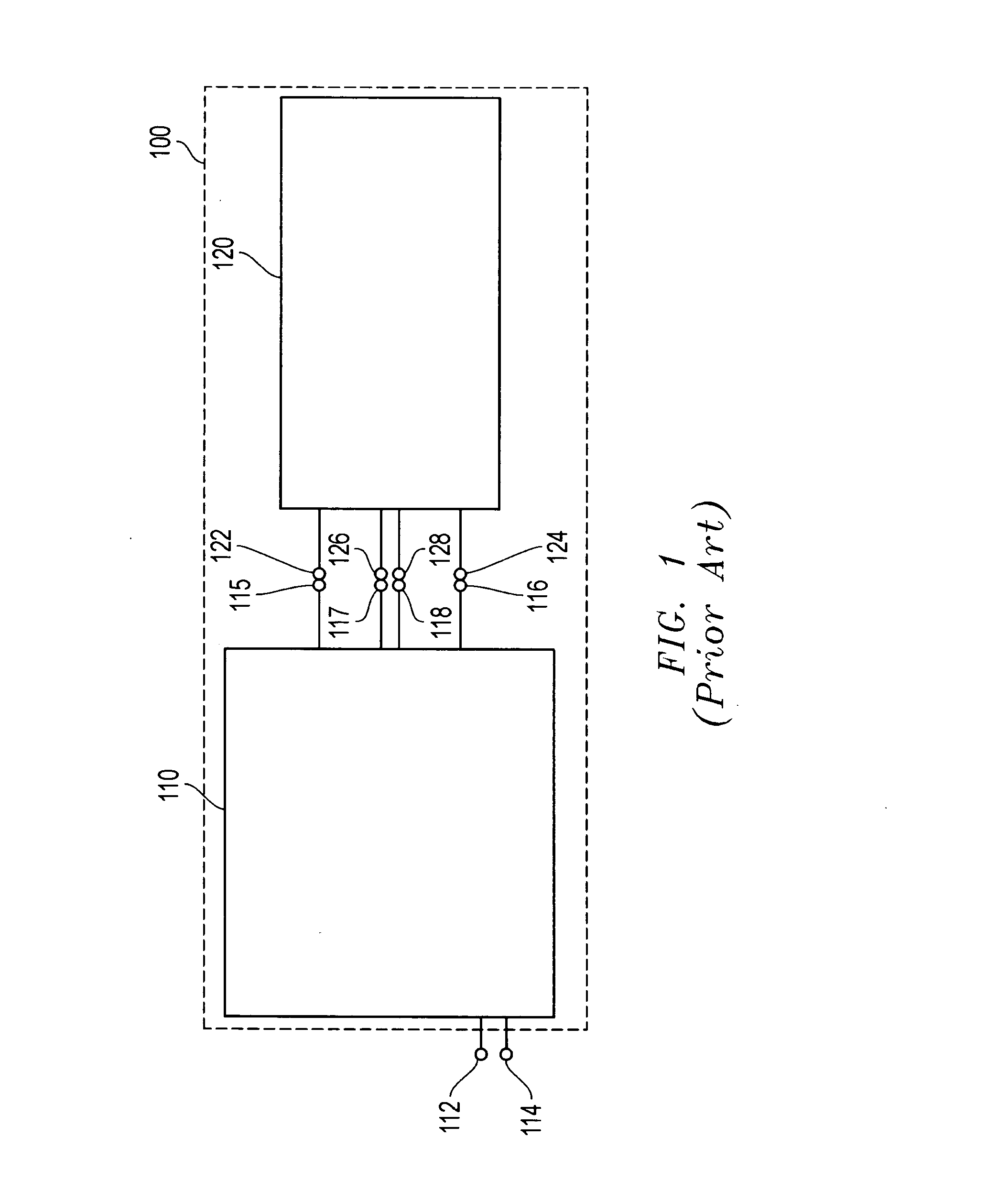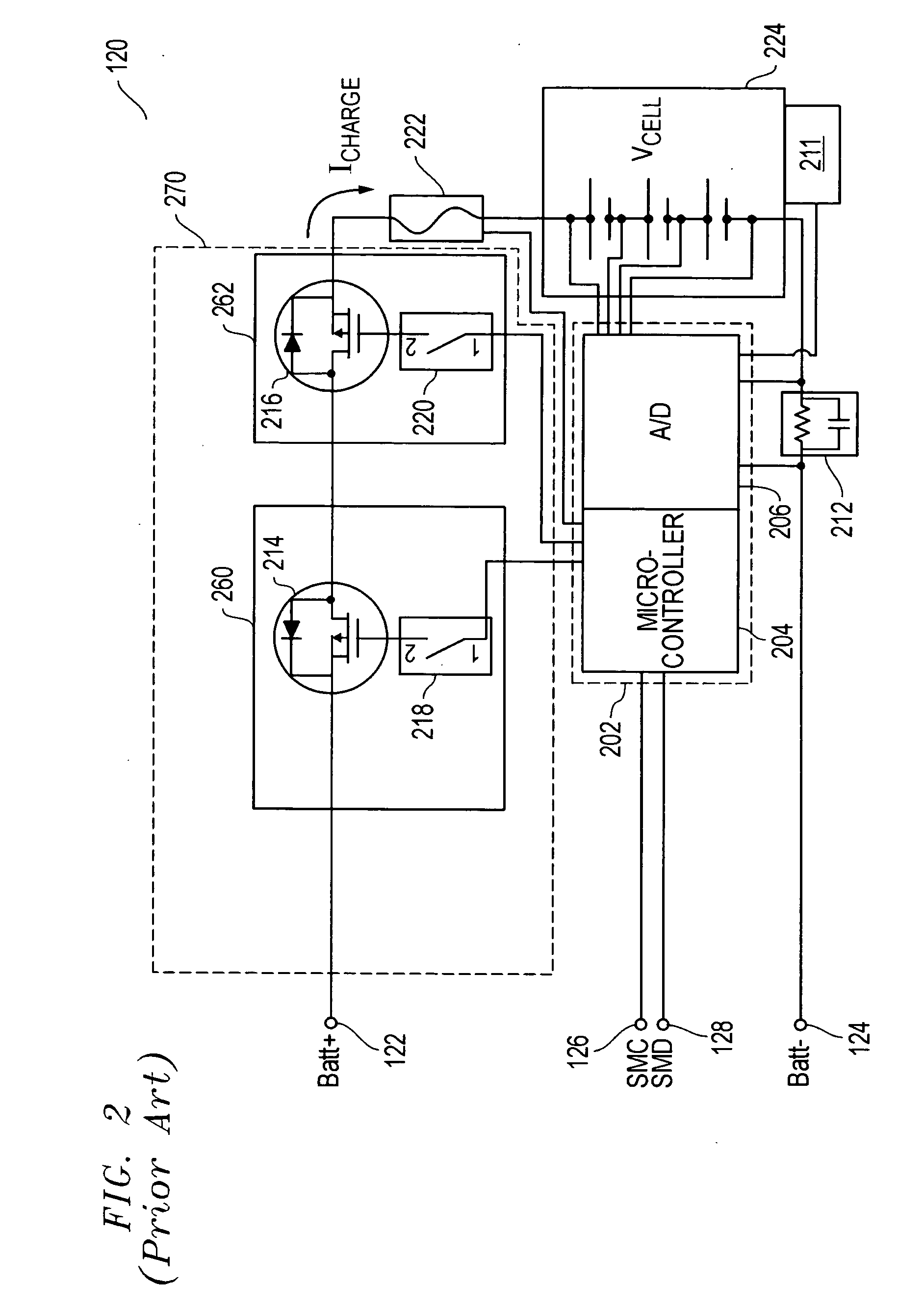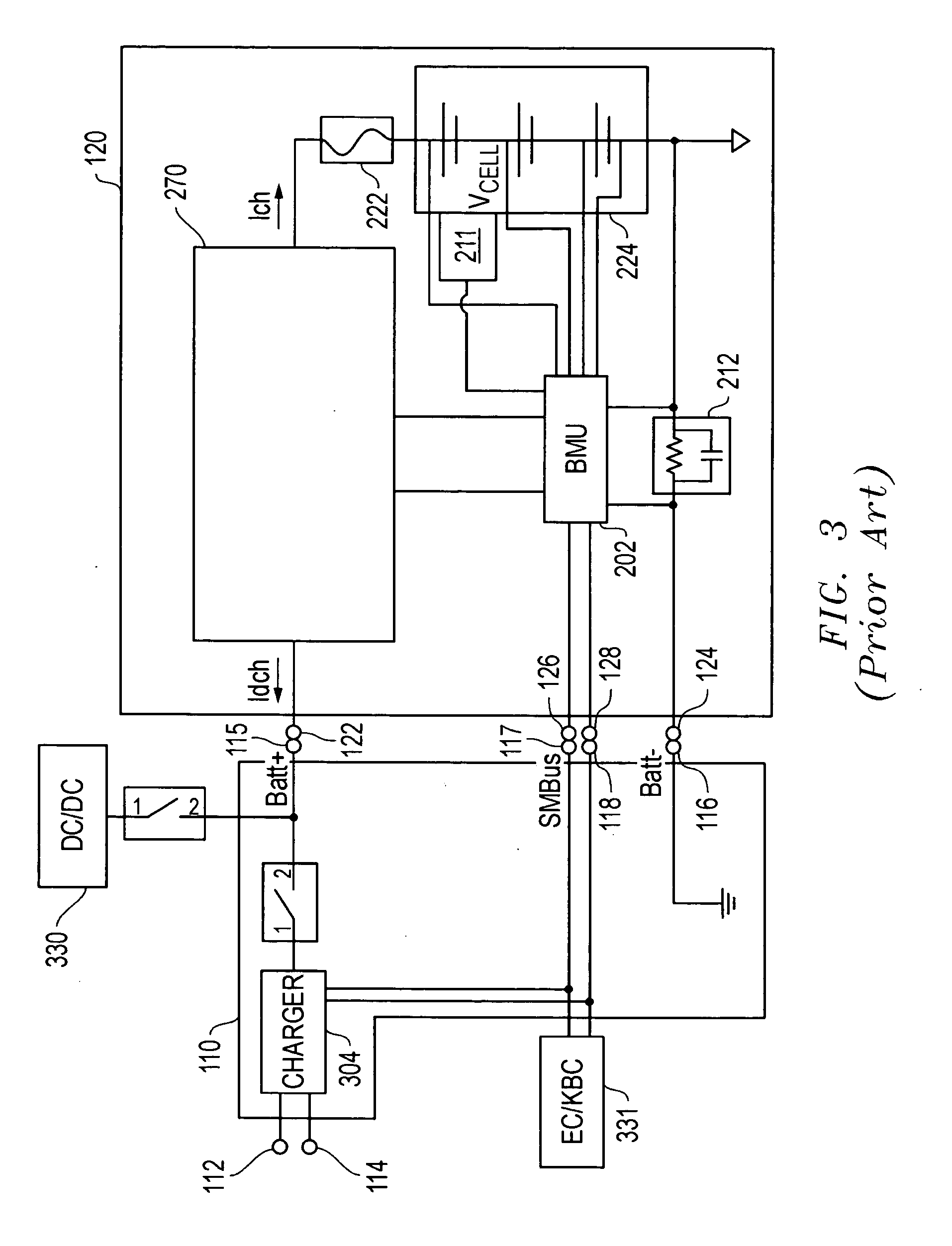Systems and methods for temperature-dependent battery charging
a battery and temperature-dependent technology, applied in the field of batteries, can solve the problems of low capacity of the battery cell/s as compared to the capacity of the battery cell/s at the default ambient operating temperature or temperature range, and achieve the effect of reducing the negative impact of the battery cell capacity
- Summary
- Abstract
- Description
- Claims
- Application Information
AI Technical Summary
Benefits of technology
Problems solved by technology
Method used
Image
Examples
Embodiment Construction
[0029]FIG. 4 shows a battery and battery charging system according to one exemplary embodiment of the disclosed systems and methods. In FIG. 4, one or more battery cell / s 408 are coupled to a battery charging current source 404 that supplies charging current (Ich) to battery cell / s 408. As described further herein, battery cell / s 408 may be, for example, a component of a smart battery system that is capable of sensing and providing voltage information or other information about its own operating condition, or may be part of a dumb battery system. Also shown in FIG. 4 is control logic 460 that is configured to control charging current output of a controllable battery charging current source 404 based on temperature information representative of ambient temperature which is received from temperature sensor 450 in combination with a current / temperature relationship 462 that represents a defined relationship between charge current magnitude and the sensed temperature received from tempe...
PUM
 Login to View More
Login to View More Abstract
Description
Claims
Application Information
 Login to View More
Login to View More - R&D
- Intellectual Property
- Life Sciences
- Materials
- Tech Scout
- Unparalleled Data Quality
- Higher Quality Content
- 60% Fewer Hallucinations
Browse by: Latest US Patents, China's latest patents, Technical Efficacy Thesaurus, Application Domain, Technology Topic, Popular Technical Reports.
© 2025 PatSnap. All rights reserved.Legal|Privacy policy|Modern Slavery Act Transparency Statement|Sitemap|About US| Contact US: help@patsnap.com



